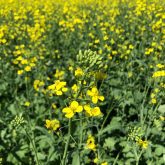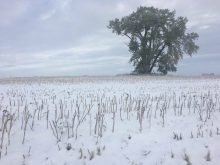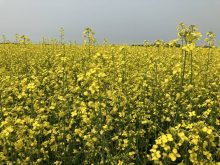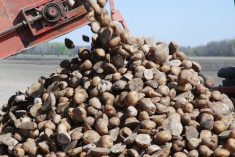The month of September has been exceptionally cold across the province and, for many areas, unusually wet. Although cool damp weather conditions have halted harvest operations in many areas, this has led to normal precipitation accumulations for most areas of the province. Adding to this was the large snowfall event in the southern and western parts of the province. The cold weather is predicted to persist into next week, but weather permitting, farmers who have access to grain dryers are likely to be combining, with priority given to higher valued crops.
Read Also

Farming Smarter receives financial boost from Alberta government for potato research
Farming Smarter near Lethbridge got a boost to its research equipment, thanks to the Alberta government’s increase in funding for research associations.
Provincially, about 40 per cent of crops have now been harvested, 24 per cent are in the swath and another 36 per cent still remain standing. When compared to the 5-year average (2013-2017), provincial harvest progress is 40 per cent behind. Regionally, harvest is behind in all regions. In the Peace Region, harvest progress is 58 per cent behind the 5-year average, in the North West Region 47 per cent, in the North East Region 50 per cent, in the Central Region 36 per cent and in the Southern Region 24 per cent. Provincially, nearly 49 per cent of spring wheat, 41 per cent of barley, 65 per cent of oats and 27 per cent of canola are standing. As well, about 53 per cent of canola across the province are in swath.
Dryland yield estimates remained similar to the previous estimates reported on September 18, with yields six per cent lower than the short term averages and in line with the long term averages. The provincial average yields for potatoes on dryland and irrigated fields are estimated at 7.1 and 15.8 tons per acre, respectively. Yields for irrigated dry beans and sugar beets are reported at 25.6 cwt per acre and 28 tonnes per acre, respectively.
Since the end of August, crop quality has started to deteriorate due to the wet conditions and is now expected to decline further. Provincially, about 78 per cent of hard red spring wheat and 85 per cent of durum wheat are now graded in the top two grades, which is still above their short and long term averages. About 23 per cent of barley is eligible for malt and 60 per cent graded as Number 1. For oats, about 48 per cent is graded in the top two grades, which is lower than their short and long term averages. Almost 92 per cent of harvested canola is in the top two grades, with only 76 per cent graded as Number 1, lower than average.














